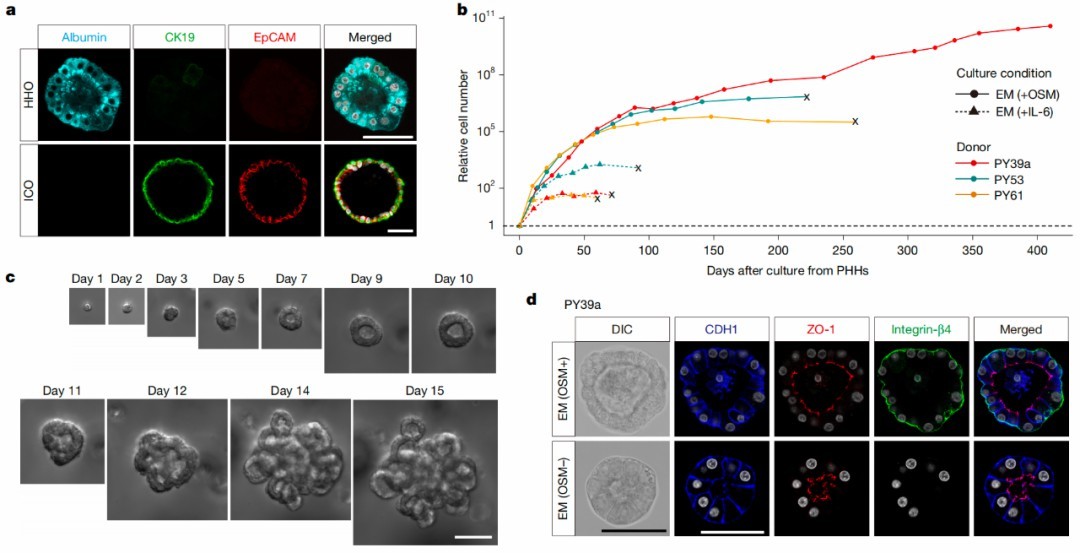Breakthrough in Organoids! Generation of Human Adult Hepatocyte Organoids with Metabolic Functions
Professor Toshiaki Sato's team at Keio University School of Medicine published a research paper titled "Generation of human adult hepatocyte organoids with metabolic functions" in Nature.
In this latest study, the research team cultured adult hepatocyte organoids with metabolic functions from cryopreserved adult hepatocytes directly taken from human patients, and demonstrated that the combined activation of the Wnt and STAT3 signaling pathways enable long-term self-renewal of human adult hepatocyte organoids, and YAP activation facilitates hepatocyte proliferation but commits it towards the biliary duct lineage. In contrast, STAT3 activation by oncostatin-M (OSM) can induce hepatocyte proliferation (up to a million times), while inhibiting bile duct metaplasia and maintaining liver characteristics.
 Fig. 1. Generation of human adult hepatocyte organoids (Igarashi, Ryo, et al. 2025).
Fig. 1. Generation of human adult hepatocyte organoids (Igarashi, Ryo, et al. 2025).
The research team said that the discovery of the role of oncostatin-M in organoid development is a key breakthrough.
Upon niche factor removal and hormone supplementation, hepatocyte organoids form cord-like structures with bile canalicular networks, possess all the main functions of the liver, and can produce compounds such as glucose, urea, bile acid, cholesterol and triglycerides, as well as albumin. Its main liver metabolic function is comparable to that of hepatocytes in vivo.
The research team further transplanted these hepatocyte organoids into the mice with impaired immune systems and dysfunctional livers. These hepatocyte organoids eventually replaced the mice's own hepatocytes and restored their liver function.
 Fig. 2. Experimental design for transplantation study (Igarashi, Ryo, et al. 2025).
Fig. 2. Experimental design for transplantation study (Igarashi, Ryo, et al. 2025).
The research team also found that these hepatocyte organoids can produce lipids on their own, and these lipids disappeared after receiving MASLD (metabolic dysfunction-associated fatty liver disease) drug treatment, which will provide a better model for the treatment of liver diseases. In addition, these hepatocyte organoids are easy to gene edit, and the research team successfully constructed ornithine carbamoyltransferase deficiency in hepatocyte organoids through gene editing, thus providing a new platform for modeling and studying genetic liver diseases.
Finally, Professor Toshiaki Sato, the leader of the study, said that converting cryopreserved cells into organoids may restore their ability to proliferate, which will make them better materials for regenerative therapy. This study shows that hepatocyte organoid transplantation can be successful in mice. To regenerate a human liver, the current scale of hepatocyte organoid growth must be expanded thousands of times. If achieved, this method will be a game changer for patients waiting for liver transplants.
Reference
-
Igarashi, Ryo, et al. "Generation of human adult hepatocyte organoids with metabolic functions." Nature (2025): 1-10.

Your email address will not be published. Required fields are marked *